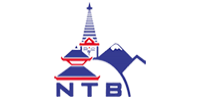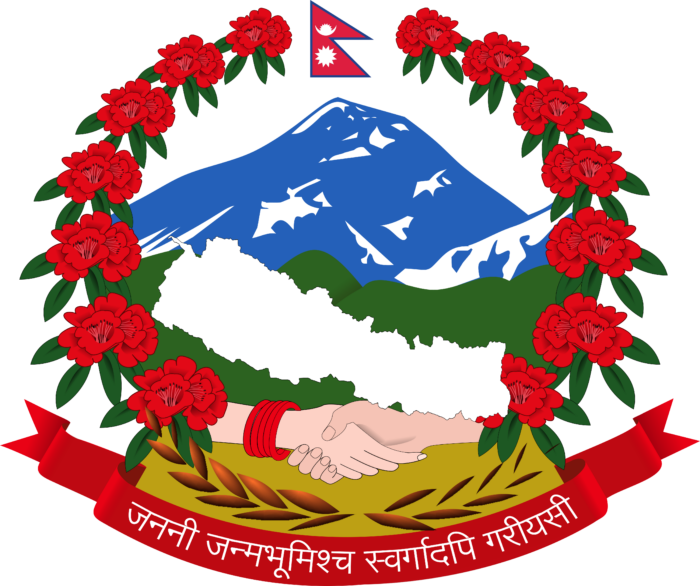Travel Details
Tourist Visa
Tribhuvan International Airport and Gautam Buddha International Airport (GBIA) are the international airports of Nepal. Immigration Office, TIA (Tribhuvan International Airport) under Department of Immigration, have been facilitating tourists flying to Nepal by providing Visa on Arrival. Obtaining an 'On Arrival' visa is very quick and simple, but you can expect some queues during the peak tourist season. If you wish to skip the queues, you can also consider getting your visa from one of the Nepalese Diplomatic Missions (Embassies/Consulates) stationed abroad prior to your arrival. The choice is yours.
If you have obtained your visa from one of the Nepalese Diplomatic Missions, then you must enter Nepal within six months from the visa issue date. Your total stay is counted starting from the day you enter into Nepal.
Visas obtained 'On Arrival' at the entry and exit points are 'Tourist Visas'. They bear a multiple re-entry facility. The 'On Arrival' Tourist Visa is the only entry visa to Nepal. If you are visiting Nepal for the purposes other than tourism (sightseeing, tour, travel, mountaineering, trekking, visiting friends and family), you should still get a 'Tourist Visa' to get into the country. However, you must change the category of visa as per your purpose and length of stay in Nepal from the Department of Immigration by producing the required documents.
Nationals of the following countries are requested to acquire a visa prior to their arrival from their nearby Diplomatic Missions of the Nepal Government.
- Nigeria
- Ghana
- Zimbabwe
- Swaziland
- Cameroon
- Somalia
- Liberia
- Ethiopia
- Iraq
- Palestine
- Afghanistan
- Syria
- Refugees with travel document
Please follow these procedures for an 'On Arrival' Tourist Visa at the airport (TIA) if you have not acquired one prior to boarding the plane.
1st Step
- Fill in 'Arrival Card'.
- Fill in Online 'Tourist Visa' form. You can complete this prior to your arrival by visiting the Department of Immigration, Nepal website. Alternatively, it can be filled in at the Department of Immigration upon your arrival at the airport. If you complete it from the website, you will receive a submission receipt with a barcode. You will need to print this and bring it with you in order to acquire a visa. It remains valid for fifteen days, after which you will need to complete a new one.
2nd Step
- Make your payment according to your visa requirement (15, 30 or 90 Days).
- Get the receipt.
While you can use different methods of payment at the visa fee collection counter, it is advised that you carry some cash in the event of a payment failure.
On Arrival Visa Fee at Entry Points
15 Days – 30 USD
30 Days – 50 USD
90 Days – 125 USD
3rd Step
- Proceed to the Immigration Desk with your online form, payment receipt and your passport.
- Hand over your documents to the Immigration Officer for inspection and visa processing. He/she will issue a visa to you upon his/her satisfaction.
Visa Extension Fee
- A Tourist Visa extension is done for a minimum of 15 days with a fee of USD 45 and USD 3 per day thereafter.
- In the event of a delay of less than 150 days, an additional USD 5 per day is charged as late fine.
Gratis Visa (Free Visa)
Gratis Visa is issued free of charge to the following categories of visa applicants:
- Children below 10 years except US citizens.
- Up to 30 days for SAARC Citizen (except Afghanistan) visiting Nepal for the first time in a given visa year. Afghan citizens are eligible for Gratis Visa 'On Arrival' only upon the recommendation of the Department of Immigration. If you are an Afghan citizen, you can request the necessary paperwork between the institution inviting you to Nepal and the Department of Immigration in order to get you Gratis Visa 'On Arrival'.
- Non Residential Nepalese (NRN) card holder (issued by MoFA /Nepalese Diplomatic Missions abroad).
- Chinese Nationals.
Officials from China, Brazil, Russia and Thailand do not need an Entry Visa based on a reciprocal visa waiver agreement.
Visas of all kinds issued at the airport, including 'Gratis', are Tourist Visas. Contact the Department of Immigration to extend or change the category of your visa. Tourist Visa extension can be done from Immigration Office, including Pokhara. Non-tourist visa extension can only be done at the Department of Immigration (if eligible) for a maximum period of one year (except Business Visa).
Passport Validity
Your passport must be valid for at least 6 months when you submit your application for a visa. You should also ensure your passport is up to date, is valid for the entire length of your stay and that you have completed the emergency contact details page.
TIMS Card (Trekkers' Information Management Systems)
All trekkers in Nepal must acquire the Trekkers' Information Management Systems (TIMS) Card before trekking. The TIMS Card is a mandatory requirement to ensure the safety and security of trekkers in the general trekking areas. Travel insurance is essential to acquire permission for trekking in Nepal and for obtaining the TIMS Card.
Trekking Permit
National Park/Conservation Area Project Permits become applicable if your route passes through any national park or conservation area. Restricted Area Permits are required in certain remote and rural areas near the borders that the Nepal Government highly regulates.
Safety in the Mountains
Here is some Important Information to be aware of for a trek above 2,500m.
Acute Mountain Sickness (AMS)
If you are not feeling well above 2,500m, it may be AMS until proven otherwise.
Early symptoms of AMS include:
- Headache.
- Loss of appetite.
- Nausea.
- Fatigue on minimal exertion.
- Dizziness.
What to do if you have AMS:
- Don't go higher, rest, drink fluids (not alcohol).
- If symptoms get worse, descend with a friend.
- If symptoms fully go away, go up.
- Consider taking Acetazolamide (Diamox 250mg twice a day).
Worsening Symptoms:
- Severe headache.
- Vomiting.
- Walking like a drunk.
- Altered mental status.
- Severe fatigue.
- Shortness of breath at rest.
DESCEND! DESCEND! DESCEND!
AMS Preventive Measures:
- Slow and gradual ascend.
- Sleeping altitude should not be more than 300 to 500m a day above 2,500m from the previous night's altitude.
- Rest day after every 1,000m of altitude gain.
- Drink plenty of clean water.
Further information at Himalayan Rescue Association Nepal.
Travel Updates





